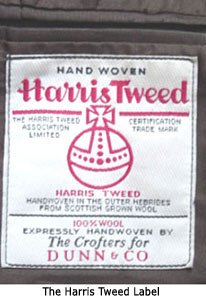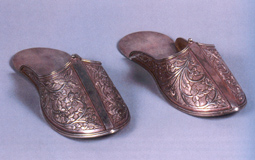
Crafts, Handlooms, Art, Sustainability, Sustainable Devt.
Protecting Heritage: Harris Tweed
Kaul, Ekta Khokhar
|
A tan and brown tweed jacket hangs in a far corner of my husband’s closet and gets frequent reverent glances from him. It is his grandfather’s. My curiosity at the jacket’s ageless appearance turned to marvel when I discovered the familiar orb and cross mark stamped on the inside. The label read “Handwoven Harris Tweed, woven in Outer Hebrides from Scottish grown wool.” |
 |
Outer Hebrides or Western Isles comprise a group of islands on Scotland’s North West coast. Characterised by harsh climate and rugged landscape, the islands are famous for Harris Tweed. Called ‘Clo Mor’ in Gaelic i.e. the big cloth, Harris Tweed is synonymous with a continued celebration of the handmade tradition. “Harris Tweed is cloth that has been hand woven by the islanders of Lewis, Harris, Uist and Barra in their homes, using pure virgin wool that has been dyed and spun in the Outer Hebrides.” This is the definition of Harris Tweed contained in the Harris Tweed Act of 1993 and it ensures that all cloth certified with the Harris Tweed Orb symbol complies with this definition and is genuine Harris Tweed, the world’s only commercially produced hand woven tweed1. |
ALSO SEE
The Tradition of Foot Covering in Indian Cultur...
Pathak, Anamika
A Directional Study Towards Empowerment
Patel, Usha Nehru



